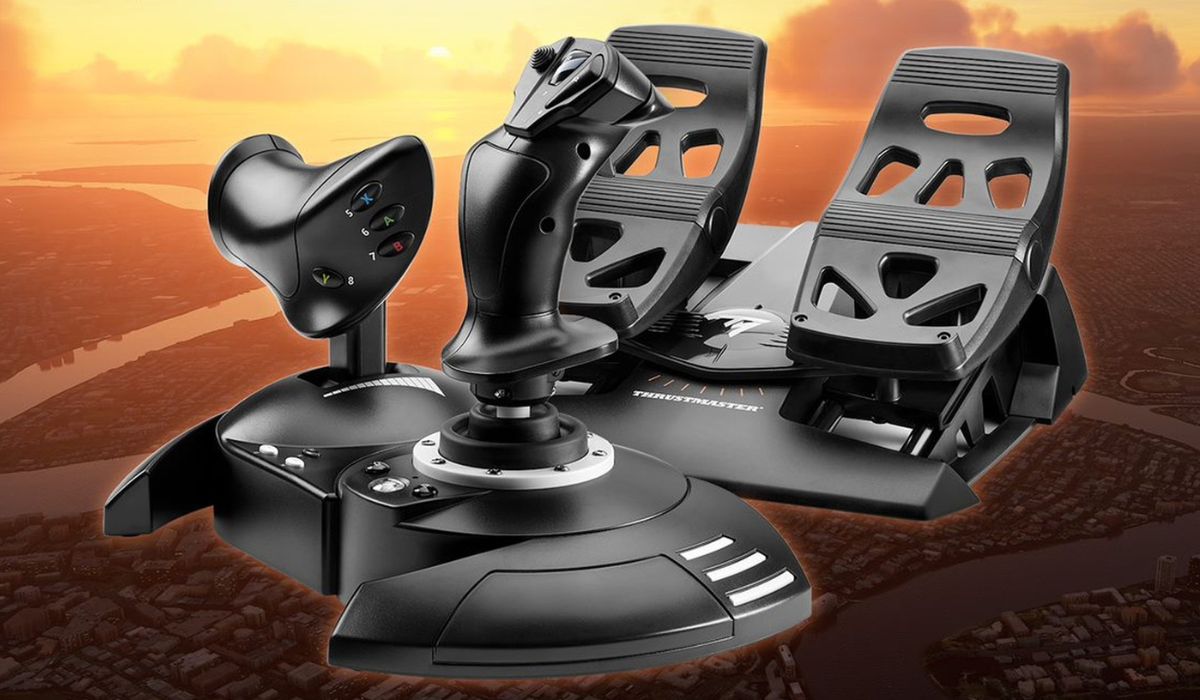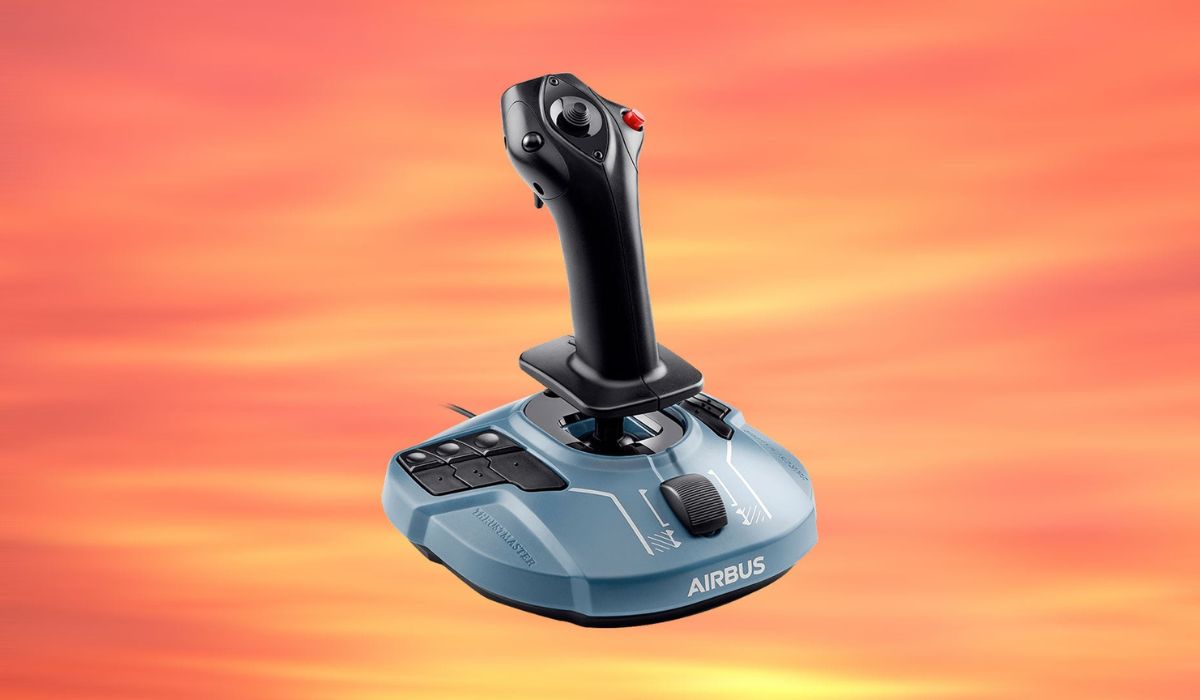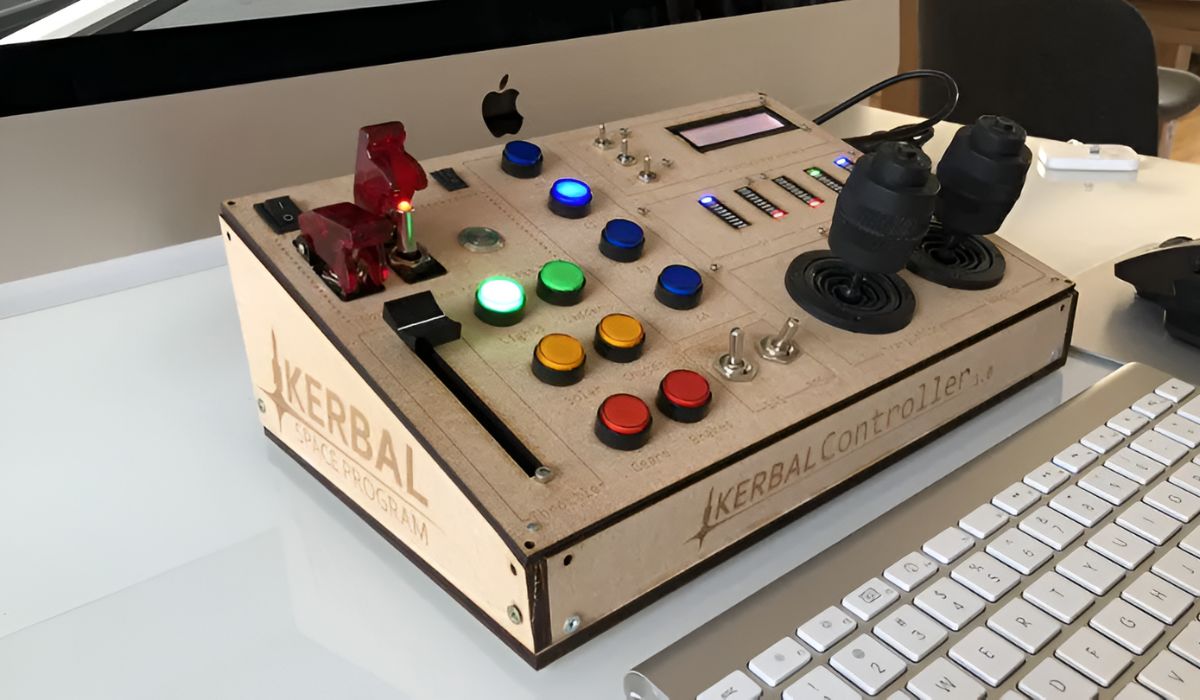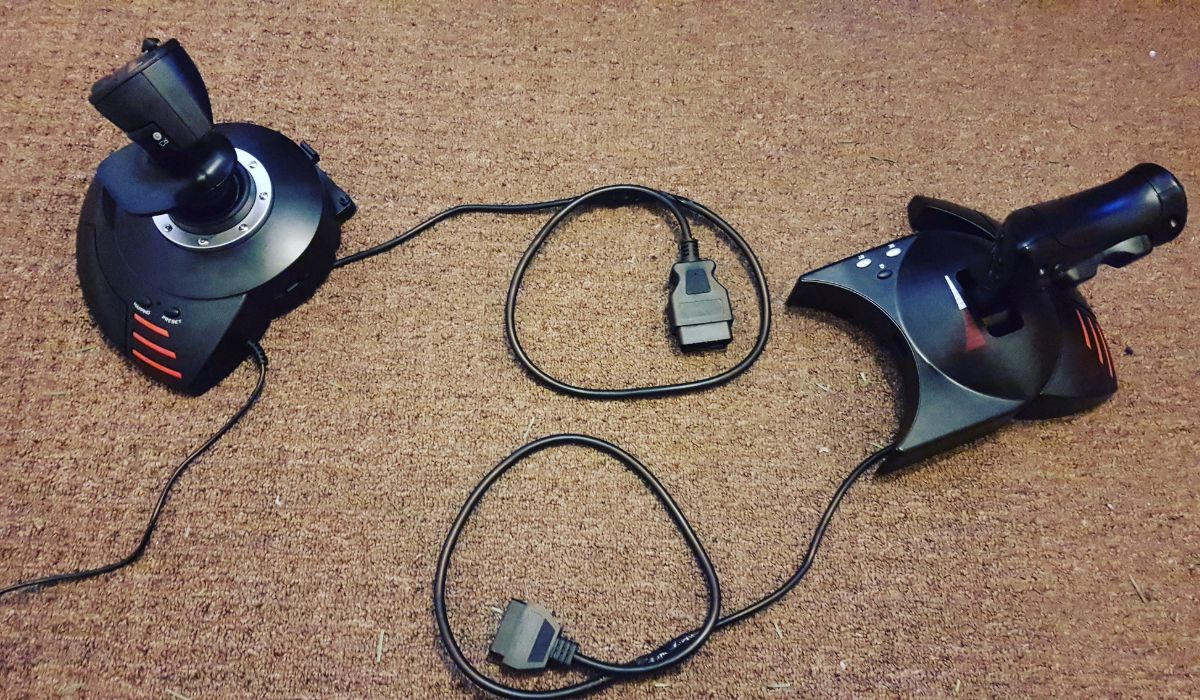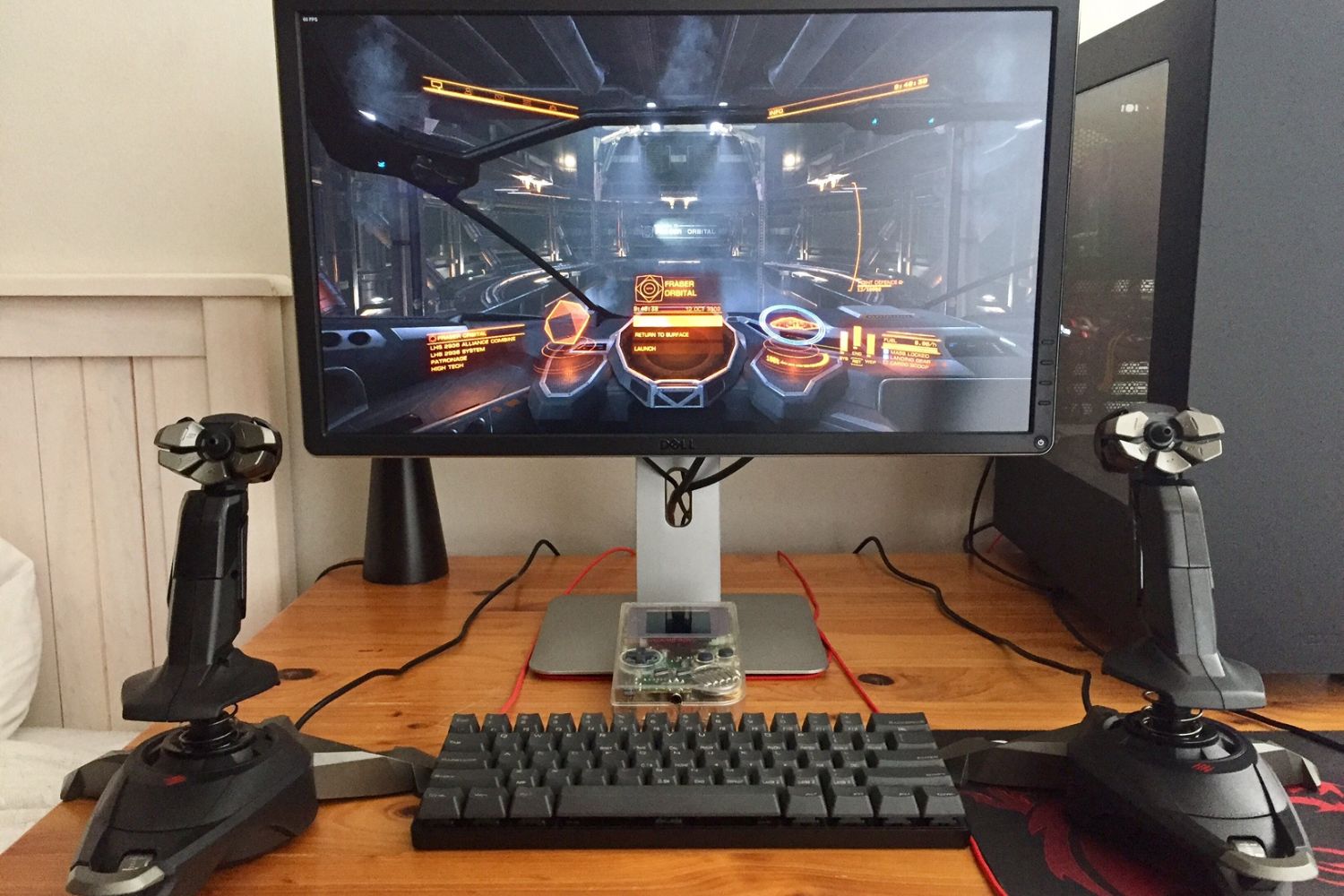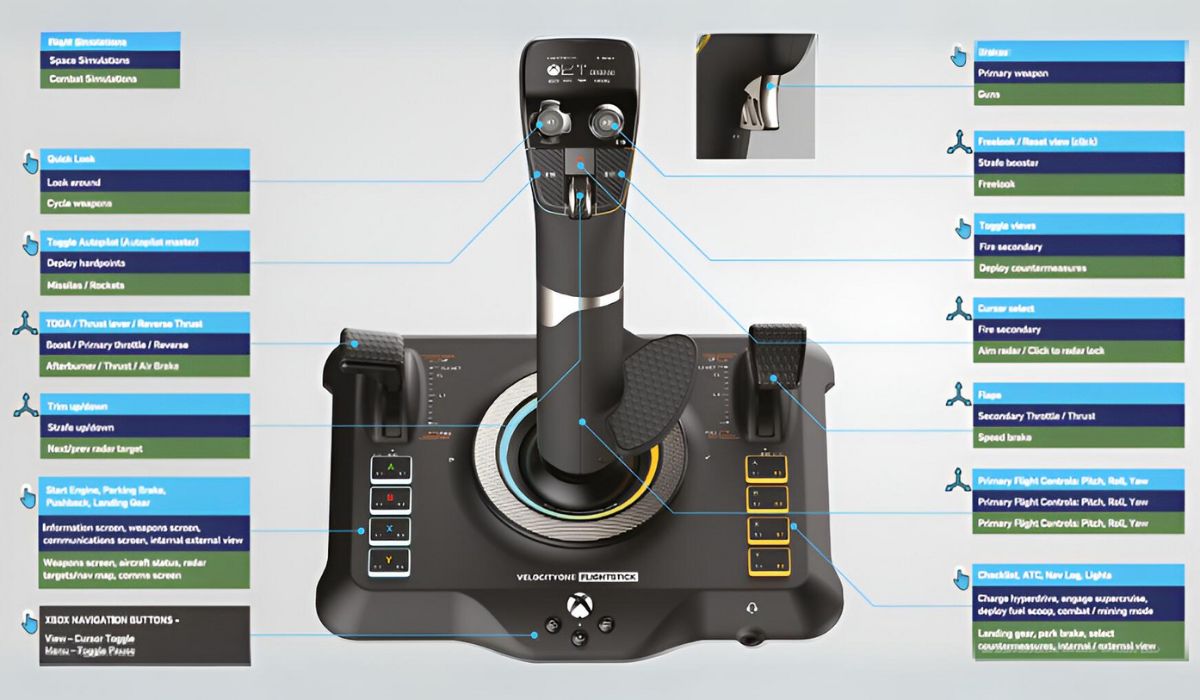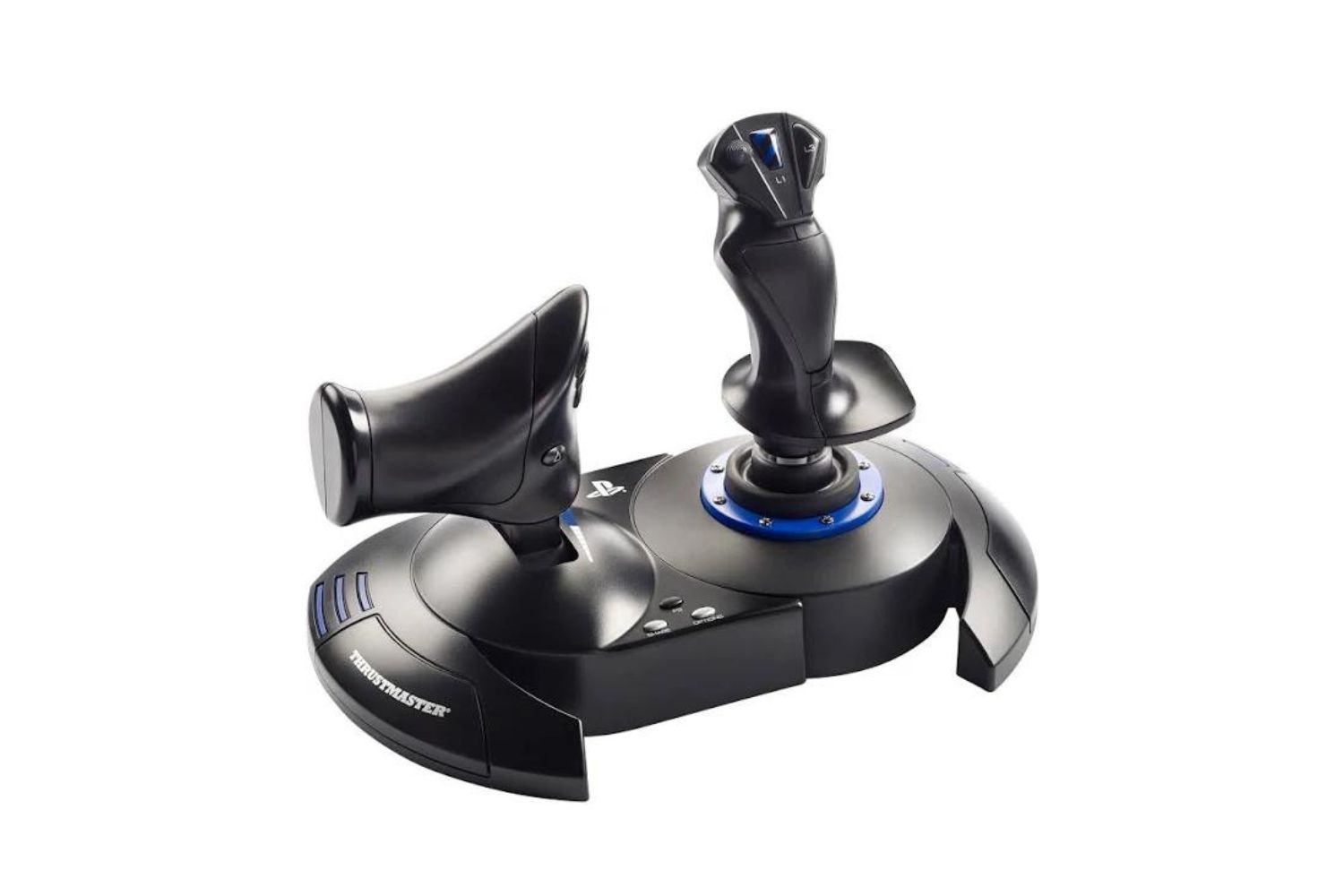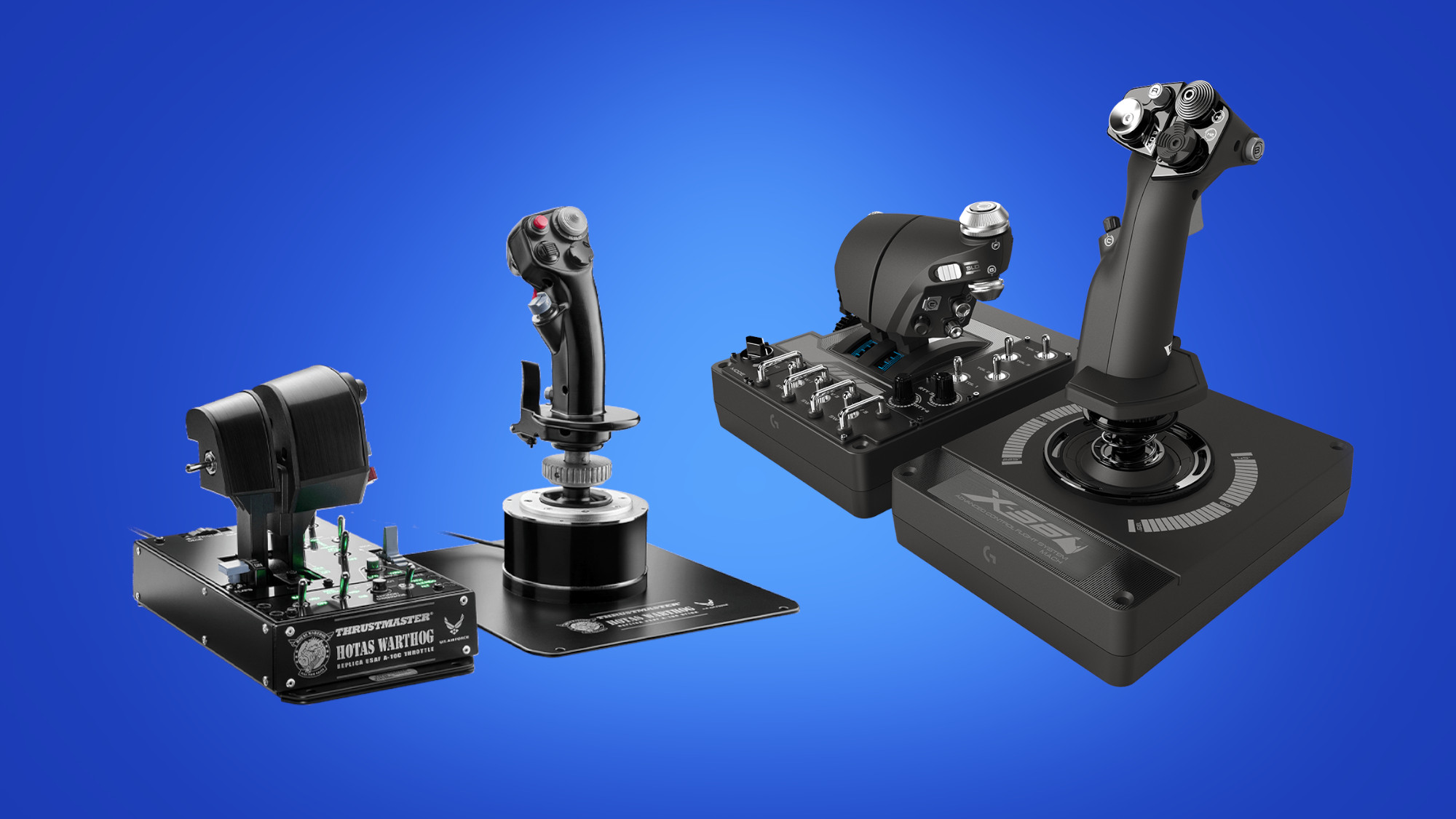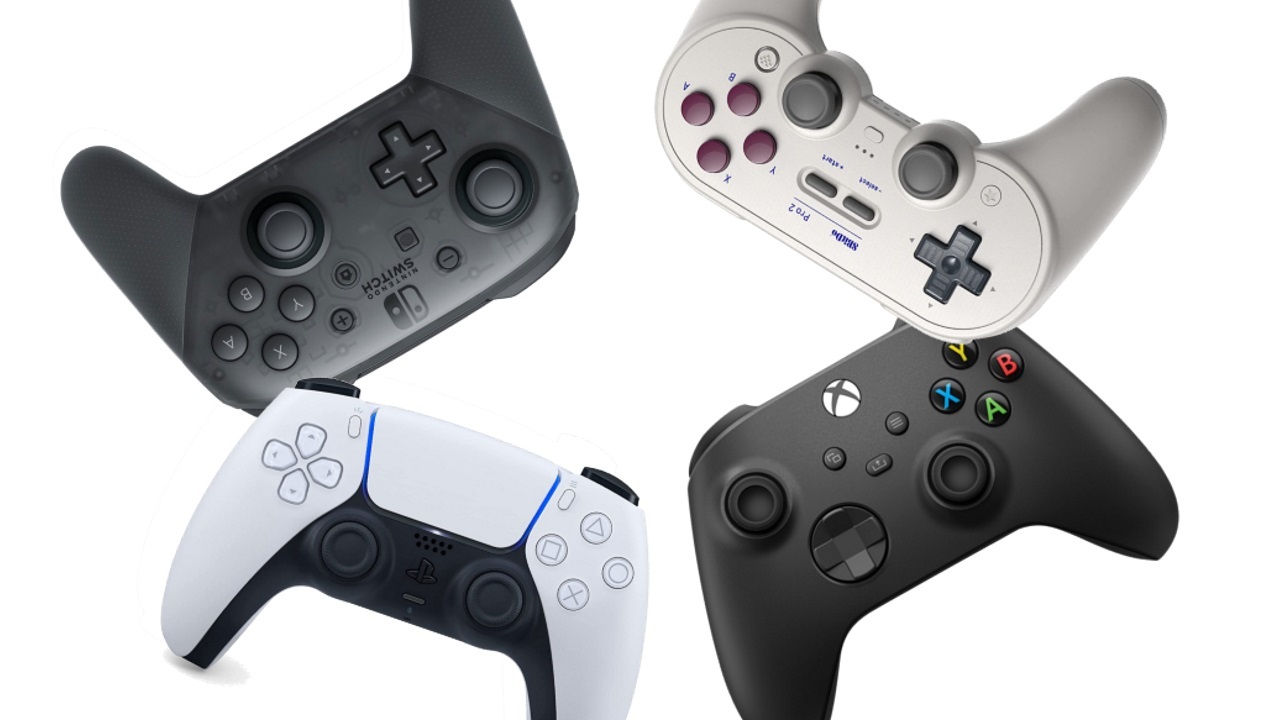Introduction
Welcome to the exciting world of flight simulation, where enthusiasts and professionals alike can experience the thrill of taking to the skies from the comfort of their own homes. At the heart of this immersive experience lies a crucial piece of hardware known as the flight stick. In this article, we will delve into the intricacies of this essential tool, exploring its definition, history, types, features, and tips for choosing the right one to enhance your flight simulation adventures.
The flight stick, also referred to as a joystick, serves as the primary control interface for aircraft simulation and gaming. It replicates the controls found in real aircraft, allowing users to manipulate pitch, roll, and yaw, as well as manage throttle and other essential functions. As technology continues to advance, flight sticks have evolved to offer increasingly realistic and responsive performance, elevating the flight simulation experience to new heights.
Whether you are a seasoned pilot looking to hone your skills or a novice seeking an immersive introduction to aviation, understanding the nuances of the flight stick is essential. Join us as we embark on a journey through the history, types, features, and selection criteria of this indispensable tool, equipping you with the knowledge to make informed decisions and maximize your enjoyment of flight simulation.
Definition of a Flight Stick
A flight stick, also known as a joystick, is a specialized input device designed to emulate the controls found in aircraft cockpits. It typically consists of a vertical or horizontal stick that can be tilted and twisted to control pitch, roll, and yaw movements, along with various buttons and switches to manage throttle, landing gear, flaps, and other functions. The flight stick serves as the primary interface between the user and the flight simulation software, allowing for intuitive and responsive control over virtual aircraft.
One of the defining features of a flight stick is its ergonomic design, which aims to replicate the feel of an actual aircraft control yoke or stick. This design consideration not only enhances the realism of the simulation experience but also contributes to user comfort during extended flight sessions. Additionally, modern flight sticks often integrate force feedback technology, providing tactile cues that simulate the sensation of flight, further immersing users in the virtual aviation environment.
As an essential tool for flight simulation enthusiasts, the flight stick plays a pivotal role in bridging the gap between virtual and real-world aviation. Its precise and customizable controls enable users to execute complex maneuvers, navigate challenging weather conditions, and experience the thrill of piloting various aircraft types, from nimble fighter jets to commercial airliners.
Understanding the intricacies of the flight stick is fundamental for anyone seeking to delve into the world of flight simulation, as it forms the cornerstone of the immersive and engaging experience that awaits virtual aviators. With a firm grasp of the flight stick’s definition and capabilities, enthusiasts can embark on their virtual flying adventures with confidence, knowing that they are equipped with a powerful and versatile tool to navigate the boundless skies.
History of the Flight Stick
The history of the flight stick traces back to the early days of aviation and the development of flight simulation technology. In the mid-20th century, as aircraft controls evolved from manual linkages to electronic systems, the concept of replicating these controls in a simulated environment began to take shape. The earliest flight sticks were rudimentary devices, often resembling simple levers or joysticks, and were primarily used for early flight training and experimental simulations.
As the capabilities of computers and gaming systems expanded, so too did the sophistication of flight sticks. In the 1980s and 1990s, with the rise of personal computing and the advent of flight simulation software, flight sticks underwent significant advancements in both design and functionality. These developments allowed for more precise and responsive control inputs, paving the way for a more immersive and realistic flight simulation experience.
Throughout the years, the evolution of the flight stick has been closely intertwined with technological progress, incorporating innovations such as force feedback, ergonomic enhancements, and customizable controls. These advancements have not only elevated the realism of flight simulation but have also catered to a diverse range of users, from casual enthusiasts to professional pilots seeking a high-fidelity training environment.
Today, the history of the flight stick stands as a testament to the enduring pursuit of realism and immersion in flight simulation. Modern flight sticks boast a myriad of features, including programmable buttons, hat switches for panoramic views, and precise axes for flight control, offering users a comprehensive and dynamic interface for piloting virtual aircraft.
As we reflect on the journey of the flight stick, from its humble origins to its current state of technological prowess, we gain a deeper appreciation for the pivotal role it plays in shaping the flight simulation landscape. The history of the flight stick serves as a testament to the enduring quest for authenticity and precision in virtual aviation, propelling enthusiasts and professionals alike to new heights of virtual flight mastery.
Types of Flight Sticks
Flight sticks come in various types, each tailored to different preferences, budgets, and levels of realism. Understanding the distinctions between these types is essential for enthusiasts seeking the ideal flight stick to suit their needs and enhance their flight simulation experiences.
1. Entry-Level Flight Sticks: These flight sticks are designed for beginners and casual users. They typically feature a basic set of controls, including a single joystick with minimal buttons and switches. Entry-level flight sticks prioritize affordability and ease of use, making them an accessible option for those new to flight simulation.
2. Mid-Range Flight Sticks: Mid-range flight sticks offer a balance of affordability and enhanced functionality. They often incorporate additional buttons, hat switches for panoramic views, and ergonomic improvements for prolonged comfort. These flight sticks cater to enthusiasts seeking a more immersive and customizable control interface without breaking the bank.
3. High-End Flight Sticks: High-end flight sticks are engineered for discerning users who demand unparalleled realism and precision. These advanced devices boast a wide range of features, including multiple axes for precise flight control, programmable buttons and switches, force feedback technology, and modular designs that allow for customization and expansion. High-end flight sticks are favored by serious flight simulation enthusiasts and professional pilots alike.
4. Hotas Systems: Short for “hands-on throttle and stick,” Hotas systems combine a flight stick with a separate throttle unit. This configuration mirrors the setup found in real aircraft cockpits and offers users a comprehensive control interface for managing throttle, flight controls, and various aircraft systems. Hotas systems are popular among enthusiasts seeking a more immersive and authentic flight simulation experience.
5. Modular Flight Sticks: Modular flight sticks allow users to customize and expand their control interfaces by adding modules such as rudder pedals, additional throttle units, or specialized control panels. This modular approach offers flexibility and scalability, enabling users to tailor their setups to specific aircraft types or simulation requirements.
By familiarizing themselves with the various types of flight sticks available, enthusiasts can make informed decisions when selecting the ideal device to complement their virtual flying pursuits. Whether prioritizing affordability, realism, or customization, the diverse range of flight sticks ensures that there is a suitable option for every aspiring virtual aviator.
Features of a Flight Stick
Flight sticks encompass a diverse array of features that contribute to their functionality, realism, and user experience. Understanding these features is paramount for enthusiasts and professionals alike, as it empowers them to select a flight stick that aligns with their specific preferences and requirements.
1. Precision Control Axes: Most flight sticks are equipped with multiple axes, including pitch, roll, and yaw controls. These axes enable users to execute precise and nuanced flight maneuvers, mimicking the control inputs required in real-world aviation.
2. Throttle Control: Many flight sticks integrate a built-in throttle lever or a separate throttle unit, allowing users to manage engine power and speed with seamless precision. Throttle controls are essential for simulating takeoffs, landings, and in-flight speed adjustments.
3. Programmable Buttons and Switches: Flight sticks often feature an array of programmable buttons and switches that can be customized to trigger specific in-game functions, such as gear deployment, flaps adjustment, or view changes. This versatility enhances user convenience and streamlines the execution of complex aircraft operations.
4. Hat Switches: Hat switches, typically located on the top of the flight stick, enable users to pan and tilt their in-game view without the need for a separate input device. This feature is invaluable for maintaining situational awareness and navigating the virtual cockpit and surrounding environment.
5. Force Feedback Technology: Advanced flight sticks may incorporate force feedback mechanisms, providing tactile feedback in response to in-game events, such as turbulence, control surface resistance, or ground interactions. Force feedback enhances immersion by simulating the physical sensations associated with piloting an aircraft.
6. Ergonomic Design: Comfort is a critical consideration during extended flight simulation sessions. Flight sticks often feature ergonomic designs with contoured grips, adjustable palm rests, and intuitive button placement to minimize user fatigue and maximize comfort during prolonged use.
7. Modular Compatibility: Some flight sticks are designed to be modular, allowing users to expand their control interfaces with additional modules such as rudder pedals, separate throttle units, or specialized instrument panels. This modularity facilitates customization and scalability, catering to diverse aircraft types and simulation requirements.
By familiarizing themselves with these features, virtual aviators can make informed decisions when selecting a flight stick that aligns with their desired level of realism, customization options, and overall user experience. Whether pursuing casual enjoyment or professional-grade simulation, the diverse features of flight sticks ensure that there is a suitable option for every virtual pilot’s aspirations.
How to Choose the Right Flight Stick
When selecting a flight stick, several key considerations come into play to ensure that the chosen device aligns with the user’s preferences, budget, and intended level of immersion. By weighing these factors thoughtfully, enthusiasts can make informed decisions that enhance their flight simulation experiences and cater to their specific virtual aviation pursuits.
1. Budget and Affordability: Determine the budget allocated for the flight stick, considering the desired features and level of realism. Entry-level flight sticks offer affordability, while high-end devices provide advanced functionality at a higher cost. Balancing budget with desired features is crucial in the selection process.
2. Realism and Immersion: Assess the desired level of realism and immersion. Enthusiasts seeking an authentic experience may opt for high-end flight sticks with force feedback, multiple axes, and programmable controls, while casual users may prioritize affordability and ease of use over advanced features.
3. Compatibility and Integration: Consider the compatibility of the flight stick with existing flight simulation software and hardware. Compatibility ensures seamless integration and optimal performance, minimizing potential technical issues and maximizing the overall simulation experience.
4. Ergonomics and Comfort: Evaluate the ergonomic design of the flight stick, considering factors such as grip comfort, button accessibility, and adjustable features. Comfort is essential for prolonged use, especially during extended flight sessions, making ergonomic considerations a vital aspect of the selection process.
5. Customization and Expansion: Determine the need for customization and expansion options. Modular flight sticks and Hotas systems offer scalability, allowing users to tailor their control interfaces to specific aircraft types or simulation requirements. Assessing the desire for future expansion is crucial when choosing a flight stick.
6. User Reviews and Recommendations: Research user reviews and seek recommendations from the flight simulation community. Real-world experiences and insights from fellow enthusiasts can provide valuable guidance in the selection process, offering firsthand perspectives on the performance and suitability of various flight sticks.
7. Support and Warranty: Consider the availability of customer support and the warranty offered by the manufacturer. Reliable support and warranty coverage provide assurance and assistance in the event of technical issues or product concerns, contributing to a positive ownership experience.
By methodically evaluating these factors, aspiring virtual aviators can navigate the vast landscape of flight sticks and make informed decisions that align with their unique preferences and aspirations. Whether pursuing casual enjoyment, honing piloting skills, or seeking professional-grade simulation, choosing the right flight stick is a pivotal step toward unlocking the boundless skies of virtual aviation.
Conclusion
The flight stick stands as a cornerstone of the flight simulation experience, offering enthusiasts and professionals alike a gateway to the captivating realm of virtual aviation. From its humble origins to its current state of technological sophistication, the flight stick has evolved to deliver precision, realism, and immersive control, enriching the virtual flying pursuits of users across the globe.
As we reflect on the multifaceted nature of the flight stick, encompassing its history, diverse types, compelling features, and considerations for selection, it becomes evident that this essential tool empowers users to embark on captivating virtual flying adventures with confidence and precision. Whether navigating the skies in a nimble fighter jet, commanding a commercial airliner, or piloting historical aircraft, the flight stick serves as a conduit for realizing the aspirations of virtual aviators.
By embracing the nuances of the flight stick, enthusiasts can tailor their flight simulation setups to align with their unique preferences, budgets, and desired levels of immersion. Whether prioritizing affordability, realism, or scalability, the diverse range of flight sticks ensures that there is a suitable option for every aspiring virtual pilot, fostering a dynamic and inclusive community of flight simulation enthusiasts.
Ultimately, the flight stick transcends its role as a mere input device, becoming a symbol of empowerment and exploration in the virtual skies. Its ability to bridge the gap between reality and simulation, to deliver tactile feedback and precise control, and to cater to a spectrum of user preferences makes it an indispensable companion for anyone seeking to soar through the boundless horizons of virtual aviation.
As enthusiasts continue to push the boundaries of flight simulation, embracing technological advancements, and fostering a spirit of camaraderie and shared passion, the flight stick remains a steadfast ally, propelling virtual aviators to new heights of mastery and enjoyment. With the right flight stick in hand, the virtual skies become an open canvas, inviting users to paint their own stories of adventure, skill, and boundless exploration.







